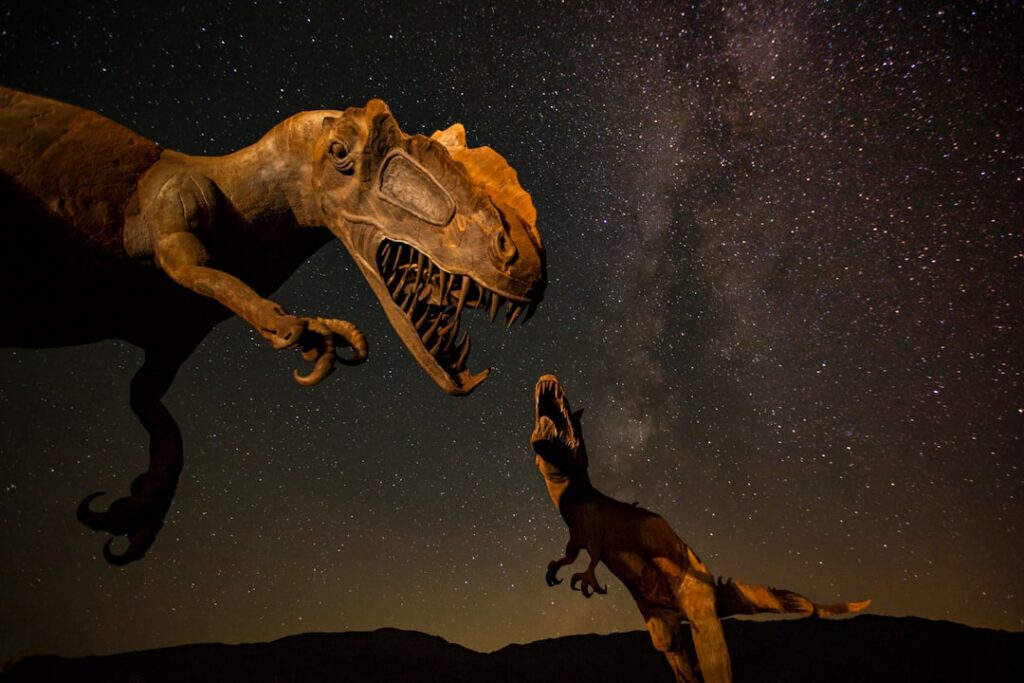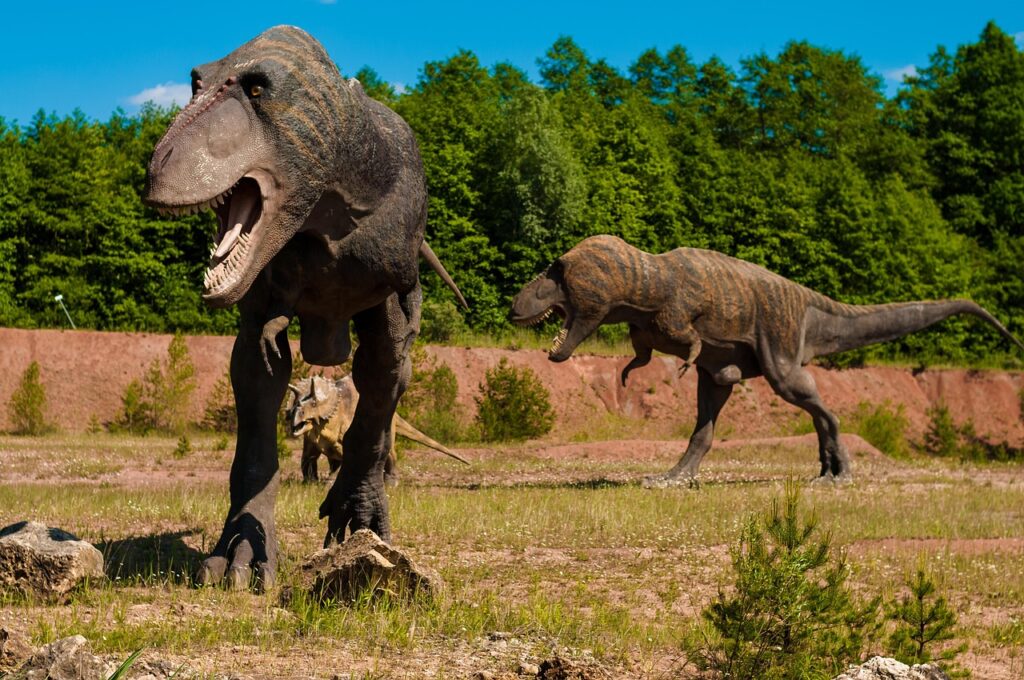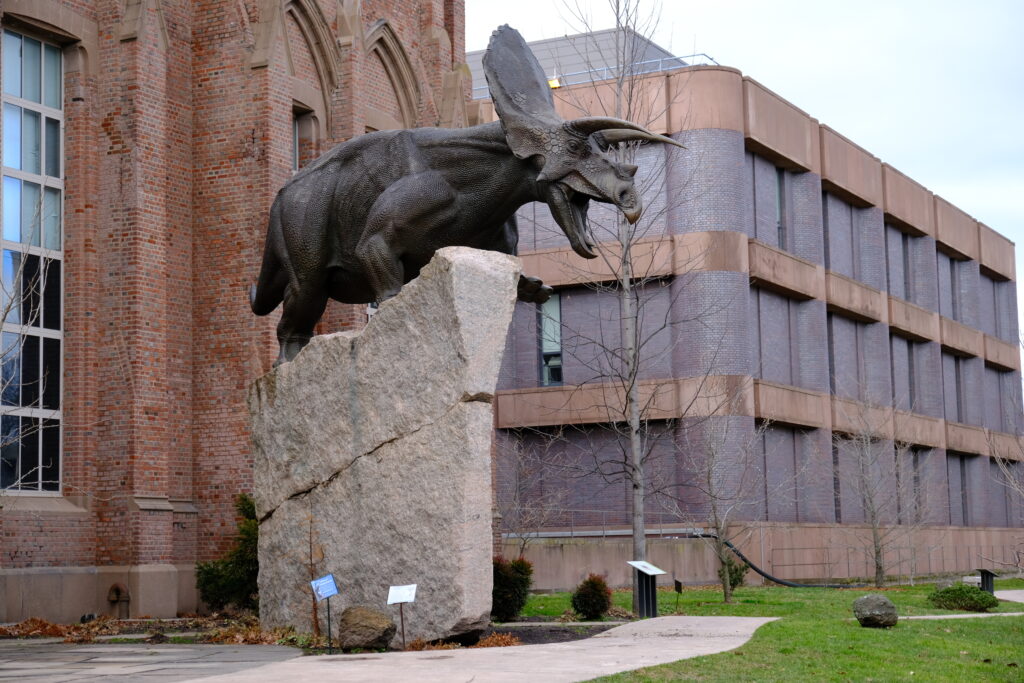Imagine standing witness to Earth’s most catastrophic moments – those sudden, violent events that wiped entire species from existence and forever changed the course of life on our planet. For decades, scientists have been piecing together evidence of a dramatic connection between cosmic collisions and the devastating mass extinctions that punctuate our planet’s history. This relationship between impact craters and biological catastrophes reveals a story of destruction and renewal that’s both terrifying and fascinating.
The Discovery That Changed Everything

The scientific world was turned upside down in 1980 when physicist Luis Alvarez and his geologist son Walter made a groundbreaking proposal. The hypothesis that an asteroid or comet impact induced the mass extinction at the KT boundary was first proposed in 1980 by a team from the University of California at Berkeley led by Nobel Prize laureate physicist Luis Alvarez and his geologist son Walter. They weren’t just theorizing – they had compelling evidence.
The enormous amount of energy generated by this impact, equivalent to about 100 teratons of TNT, roughly 2 million times more powerful than the most powerful nuclear bomb ever tested, ejected into the atmosphere huge quantities of dust particles and gases. The father-son team discovered something extraordinary in rock layers from 66 million years ago: unusually high concentrations of iridium, a metal that’s rare on Earth but common in asteroids and comets. This finding opened the floodgates to a completely new understanding of how life on Earth could be suddenly and dramatically altered by visitors from space.
Chicxulub – The Smoking Gun of Mass Extinction

The most famous example of this impact-extinction connection lies buried beneath Mexico’s Yucatan Peninsula. The impact hypothesis, also known as the Alvarez hypothesis, was bolstered by the discovery of the 180 km (112 mi) Chicxulub crater in the Gulf of Mexico’s Yucatán Peninsula in the early 1990s, which provided conclusive evidence that the K–Pg boundary clay represented debris from an asteroid impact. This massive crater, roughly 180 kilometers in diameter, represents ground zero for one of Earth’s most famous mass extinctions.
About 66 million years ago at the boundary between the Cretaceous (the last geological period of the Mesozoic) and the Tertiary eras, a large asteroid came rushing out of space at a velocity of more than 25 km per second and impacted the Earth at the tip of the Yucatan platform. The asteroid with a diameter of more than 10 km impacted into a shallow ocean and penetrated the Earth’s crust down to a depth of several kilometers. The devastating aftermath of this collision wiped out roughly three-quarters of all plant and animal species, including the mighty dinosaurs that had ruled the planet for millions of years.
The Mechanics of Planetary Devastation

When a massive space rock slams into Earth, the consequences are far more catastrophic than just the immediate explosion. Over a short period of time (a few minutes) several hundred billion tons of CO2, SO2 and water vapor released by the vaporized target rock were injected into the Earth atmosphere. An abrupt and global perturbation of the Earth System followed: the climate became unstable, the fine dust suspended in the atmosphere blocked sunlight, decreasing or even stopping photosynthesis.
The chain reaction that follows an impact is like a planetary apocalypse in slow motion. The rock heated Earth’s surface and ignited wildfires, estimated to have enveloped nearly 70% of the planet’s forests. The effect on living creatures even hundreds of kilometers away was immense, and much of present-day Mexico and the United States would have been devastated. Picture massive tsunamis racing across oceans, global wildfires consuming continents, and a suffocating blanket of dust and debris blocking out the sun for months or even years. It’s nature’s ultimate reset button, pressed with terrifying force.
The Ordovician Bombardment – A Different Kind of Catastrophe

Not all impact-related extinctions follow the same pattern as the dinosaur-killing Chicxulub event. This theory was proposed by Swiss and Swedish researchers based on the comparatively tight age clustering of L chondrite grains in sediments in southern Sweden. According to a 2019 study, this temporary increase in the impact rate could have been caused by the destruction of the L chondrite parent body that was 150 kilometers (93 mi) in diameter and orbited in the asteroid belt between Mars and Jupiter. This occurred around 468 ± 0.3 million years ago having scattered fragments into Earth-crossing orbits.
Recent discoveries suggest something even more extraordinary might have happened during the Ordovician period. The researchers suggest that this unlikely pattern of impacts could be explained by an asteroid having broken apart after a close call with the Earth and the remains forming a ring around the planet, from which the meteorites fell to the ground and created the craters. “The hypothesis is that a large asteroid broke up when it had a close encounter with the Earth 466 million years ago. Debris may have formed a ring around the Earth, and from there rained down on the Earth to produce the geological features we can see today,” study lead author Andy Tomkins, a professor at Monash University’s School of Earth, Atmosphere and Environment in Australia, told Newsweek. Imagine Earth adorned with magnificent rings like Saturn, but instead of beauty, these rings spelled doom as they gradually rained destruction from above.
The Great Dying – When Nearly Everything Vanished

The most devastating mass extinction in Earth’s history occurred around 252 million years ago, and scientists are still debating whether an impact was responsible. The Permian–Triassic (P–Tr) extinction event, informally known as the Great Dying, was an extinction event that occurred 251.9 Ma (million years) ago, forming the boundary between the Permian and Triassic geologic periods, as well as the Paleozoic and Mesozoic eras. It is the Earth’s most severe known extinction event, with up to 96% of all marine species and 70% of terrestrial vertebrate species becoming extinct.
Evidence for an impact connection remains tantalizing but elusive. Deep inside Permian-Triassic rocks, Becker’s team found soccer ball-shaped molecules called “fullerenes” (or “buckyballs”) with traces of helium and argon gas trapped inside. The fullerenes held an unusual number of 3He and 36Ar atoms — isotopes that are more common in space than on Earth. Deep inside Permian-Triassic rocks, Becker’s team found soccer ball-shaped molecules called “fullerenes” (or “buckyballs”) with traces of helium and argon gas trapped inside. The fullerenes held an unusual number of 3He and 36Ar atoms — isotopes that are more common in space than on Earth. However, the accuracy of most of these claims has been challenged. Iridium levels in many sites straddling the Permian-Triassic boundaries are not anomalous, providing evidence against an extraterrestrial impact as the PTME’s cause.
The Missing Craters Mystery

One of the most frustrating aspects of impact-extinction research is the scarcity of smoking guns. There is no definitive evidence of impacts leading to the three other major mass extinctions. This absence of clear evidence doesn’t necessarily mean impacts weren’t involved – it might just reflect the harsh reality of geological time.
Earth’s oldest ocean-floor crust is only 200 million years old as it is continually being destroyed and renewed by spreading and subduction. Furthermore, craters produced by very large impacts may be masked by extensive flood basalting from below after the crust is punctured or weakened. The Earth is like a constantly renovating house – evidence gets erased by volcanic activity, erosion, and the relentless movement of tectonic plates. Many potential impact sites have likely vanished beneath the waves or been obliterated by geological processes over hundreds of millions of years.
Beyond Simple Cause and Effect

The relationship between impacts and extinctions isn’t always straightforward. In fact, a more careful examination of stratigraphic record over the following decades, paired with advances in radiometric dating of craters and extinction events, reveals that the interpretation of Alvarez et al. (1980) is confidently supplied only for the K-Pg boundary (see discussion in Smit, 2022). All other assumed impact extinctions are considered doubtful.
Some scientists argue that impacts might work in conjunction with other catastrophic events rather than acting alone. A large impact might have triggered other mechanisms of extinction described above, such as the Siberian Traps eruptions at either an impact site or the antipode of an impact site. The abruptness of an impact also explains why more species did not rapidly evolve to survive, as would be expected if the Permian–Triassic event had been slower and less global than a meteorite impact. Think of impacts as the first domino in a catastrophic chain reaction that can trigger massive volcanic eruptions, climate change, and oceanic upheaval.
Modern Scientific Skepticism and Rigorous Standards

Today’s scientists have learned to be cautious about linking every mass extinction to an impact event. The updated three-step methodology presents an accurate approach to cause-effect inference in impact catastrophism. It begins with (1) conclusive recognition of impact craters and ejecta, followed by (2) their precise radiometric or biostratigraphic dating, and concludes with (3) assessing the impact’s “kill” potential. The impact contribution to widely defined mass extinctions has been falsified based on the latest crater information from the global database and the updated ages of stratigraphic boundaries.
The scientific community now demands multiple lines of evidence before accepting an impact-extinction connection. For example, supposed giant craters based only on geophysical studies, such as those alleged as evidence of impact-driven end-Permian and Late Ordovician extinctions, are not supported by any real impact evidence (e.g., catastrophic sedimentation) in adjacent areas. For example, supposed giant craters based only on geophysical studies, such as those alleged as evidence of impact-driven end-Permian and Late Ordovician extinctions, are not supported by any real impact evidence (e.g., catastrophic sedimentation) in adjacent areas. This rigorous approach ensures that extraordinary claims require extraordinary evidence, preventing scientists from jumping to conclusions based on incomplete data.
Conclusion

The link between impact craters and mass extinctions represents one of the most dramatic intersections between astronomy and biology in Earth’s history. While the Chicxulub impact and the extinction of the dinosaurs remain the gold standard for proving this connection, the relationship between cosmic catastrophes and biological devastation is far more complex than scientists initially imagined.
From the possible ring system that may have adorned our planet during the Ordovician to the mysterious buckyballs that hint at a Permian impact, each mass extinction tells a unique story of destruction and survival. The ongoing debate about these connections reflects the beautiful uncertainty of science – our understanding continues to evolve as new evidence emerges and analytical techniques improve.
What makes this field so compelling is not just the spectacular nature of the catastrophes involved, but what they reveal about the resilience and fragility of life itself. Each impact-extinction event serves as a reminder that our planet exists in a cosmic shooting gallery, where the difference between survival and annihilation can come down to timing, location, and pure chance. The next time you look up at the night sky, remember that among those distant points of light lurk the potential architects of both destruction and renewal.
Did you ever imagine that Earth might once have worn rings like a cosmic crown, or that microscopic soccer ball-shaped molecules could hold secrets to planetary catastrophes?




